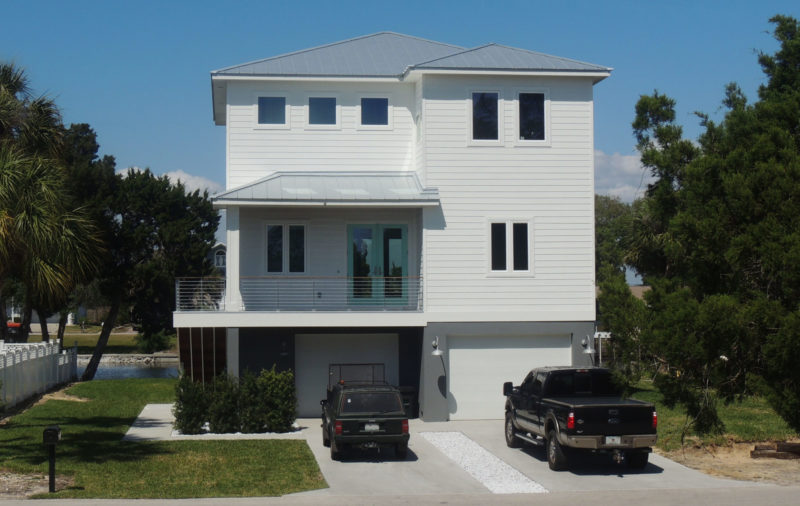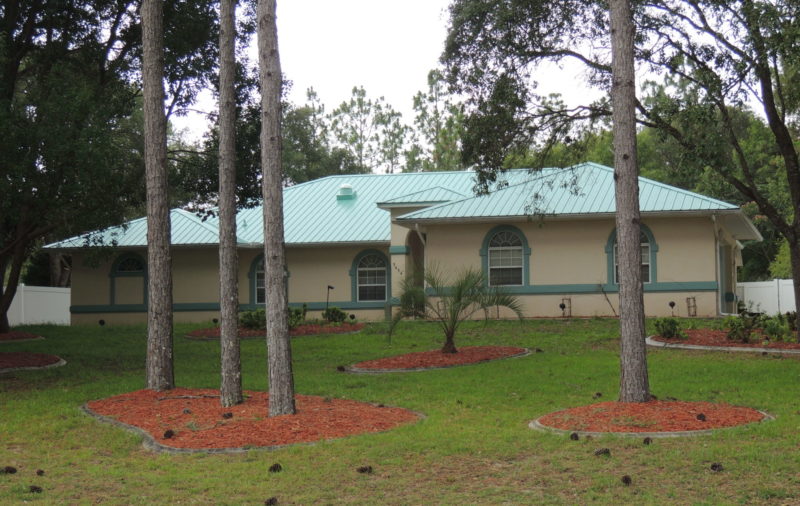[vc_ro
Panel Options
Metal panels are grouped into two main categories. Exposed Fastener and Hidden Fastener systems. Take a look below for the main differences between the two. For further information, contact us.
Pros:
-
Fasteners are covered & therefor pose a lower leak risk.
-
Has a cleaner look without fastener visibility.
-
Most affordable hidden fastener system.
Cons:
-
More expensive than exposed fastener system.
-
More complicated installation process than exposed fastener system.
Proper installation
As with any roof system, proper installation is key to ensure you are getting the most years out of your metal roof investment. These systems each come with their own skill set that require detailed training. Watertight installation always takes first place for workmanship but attention to aesthetic detail will be what everyone sees and therefor is a close second. BOTH should be a focus for every contractor.
Leak free workmanship
A roof systems primary function is to keep water from entering the house structure. This must always be the first goal in the installation process. When proper install practices are used, the workmanship will mirror the lifespan of the materials.
One issue unique to exposed fastener systems is under or over tightening of fasteners. This is the number one cause of exposed fastener system failures. When a screw is under tightened, the sealing washer doesn’t make proper contact with the panel and allows water to penetrate the roof. Over tightening on the other hand, can strip out wood causing the screw to back out over time or when using cheap screws can lead to cover washer deformation damaging the sealing washer below it, again causing water to penetrate the roof.
Yet another screw related failure is when installers fail to install fasteners perpendicular to roof panels.
Improper accessories are another cause of roof failure. Galvanic corrosion also known as bimetallic corrosion cause roof panels to rust prematurely. Not only does this pose a leak risk over time, it also creates unsightly stains and in many cases will void the manufacturers warranty.
Some issues arise due to inexperience or just plain carelessness. Here a homeowner paid for a metal roof over. The images clearly show that the installer had no idea of what they were doing or they just didn’t care. Not only was the existing vent left on but no attempt was even made to flash around it. The homeowner noticed the problem and sealed the void but this will not remain watertight for very long. The only repair option is to lift the panel and install a new vent.
More proof of sub-par workmanship. These images along with the image above were from the same roof-over job. In these images as well as the previous one it’s clear that no permit was pulled. Without proper drip edge wind can work it’s way under the panels. Looking at the other image one can see the panels are not fastened to manufacturers requirements. This roof could very well blow off in a heavy wind storm.
Attention to detail
It can’t be argued that the primary goal in roofing is to protect the home from water damage. However, the close second is a roofs look or appeal. Although the images below won’t necessarily cause leakage, aesthetically these homeowners are not getting their moneys worth.
This valley may not leak, but nothing need be said about the aesthetics.
The rake trim on this home is clearly installed badly. Furthermore, it isn’t fastened correctly.



![GulfRib[shadow] with logo](https://www.proroofserv.com/wp-content/uploads/2018/09/GulfRibshadow-with-logo.jpg)
![GulfPBR[shadow] with logo](https://www.proroofserv.com/wp-content/uploads/2018/09/GulfPBRshadow-with-logo.jpg)
![5V[shadow] with logo](https://www.proroofserv.com/wp-content/uploads/2018/09/5Vshadow-with-logo.jpg)
![GulfWave[shadow] with logo](https://www.proroofserv.com/wp-content/uploads/2018/09/GulfWaveshadow-with-logo.jpg)
![GulfLok[shadow] with logo](https://www.proroofserv.com/wp-content/uploads/2018/09/GulfLokshadow-with-logo.jpg)
![GulfSeam[shadow] with logo](https://www.proroofserv.com/wp-content/uploads/2018/09/GulfSeamshadow-with-logo.jpg)
![Mega_Versaloc[shadow] with logo](https://www.proroofserv.com/wp-content/uploads/2018/09/Mega_Versalocshadow-with-logo.jpg)